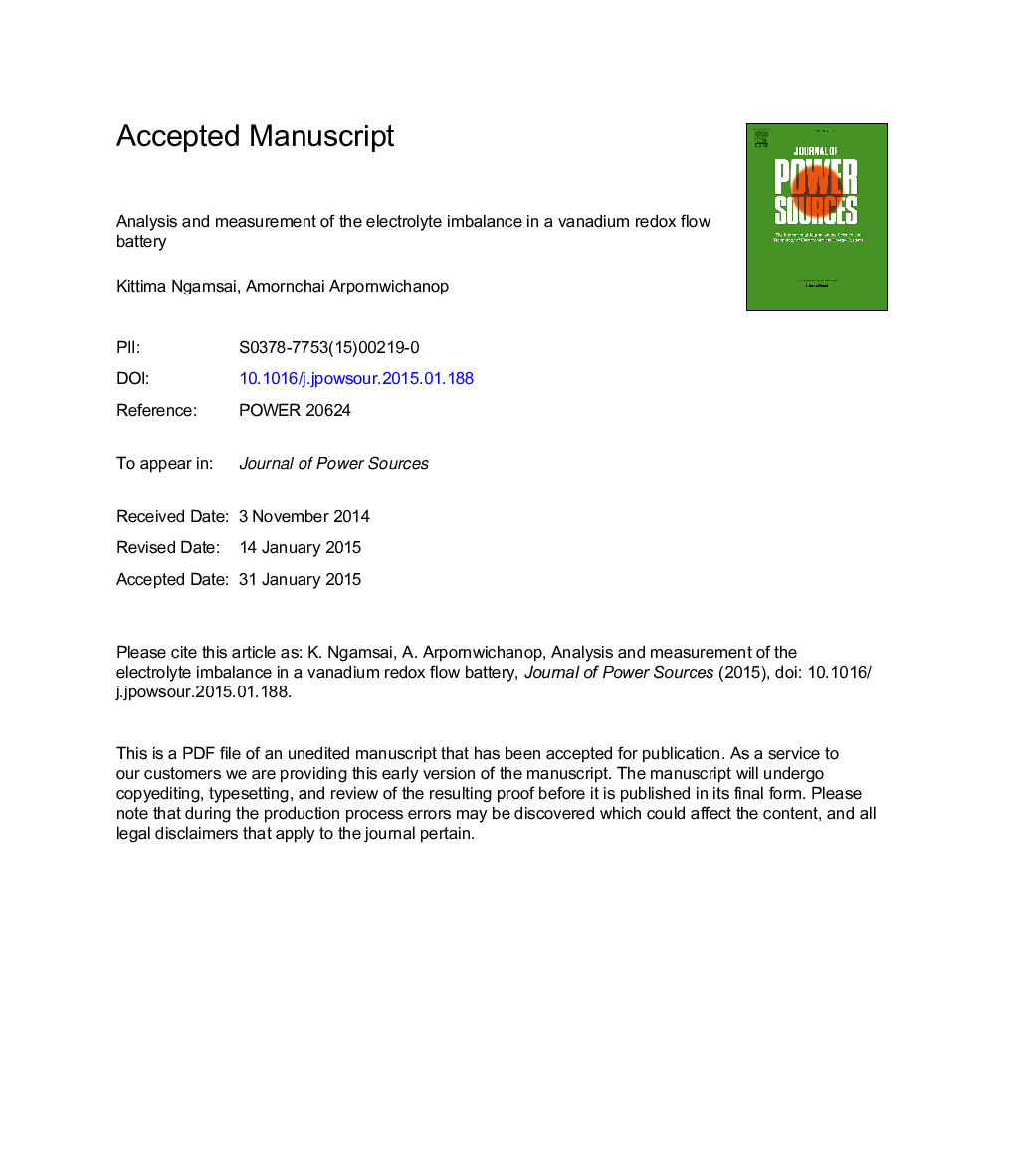| Article ID | Journal | Published Year | Pages | File Type |
|---|---|---|---|---|
| 7733158 | Journal of Power Sources | 2015 | 36 Pages |
Abstract
Electrolyte imbalance in vanadium redox flow batteries is an important problem for its long-term operation as it leads to loss of energy. To address this problem, a modified open circuit voltage (OCV) cell is developed by adding a middle half cell between the negative and positive half cells of a conventional OCV cell and used to predict the oxidation state of vanadium in the electrolyte solution from the measured voltage in each side of the electrolyte (positive and negative). The correlation between the oxidation state of vanadium and cell voltage is explained by a basic electrochemical principle and the Nernst equation. The experimental results show that at different oxidation states of vanadium, the predicted OCV agrees reasonably with the experimental data. In addition, the effect of the state of charge (SOC) and electrolyte imbalance on the energy capacity of a cell is discussed.
Keywords
Related Topics
Physical Sciences and Engineering
Chemistry
Electrochemistry
Authors
Kittima Ngamsai, Amornchai Arpornwichanop,
